
Article
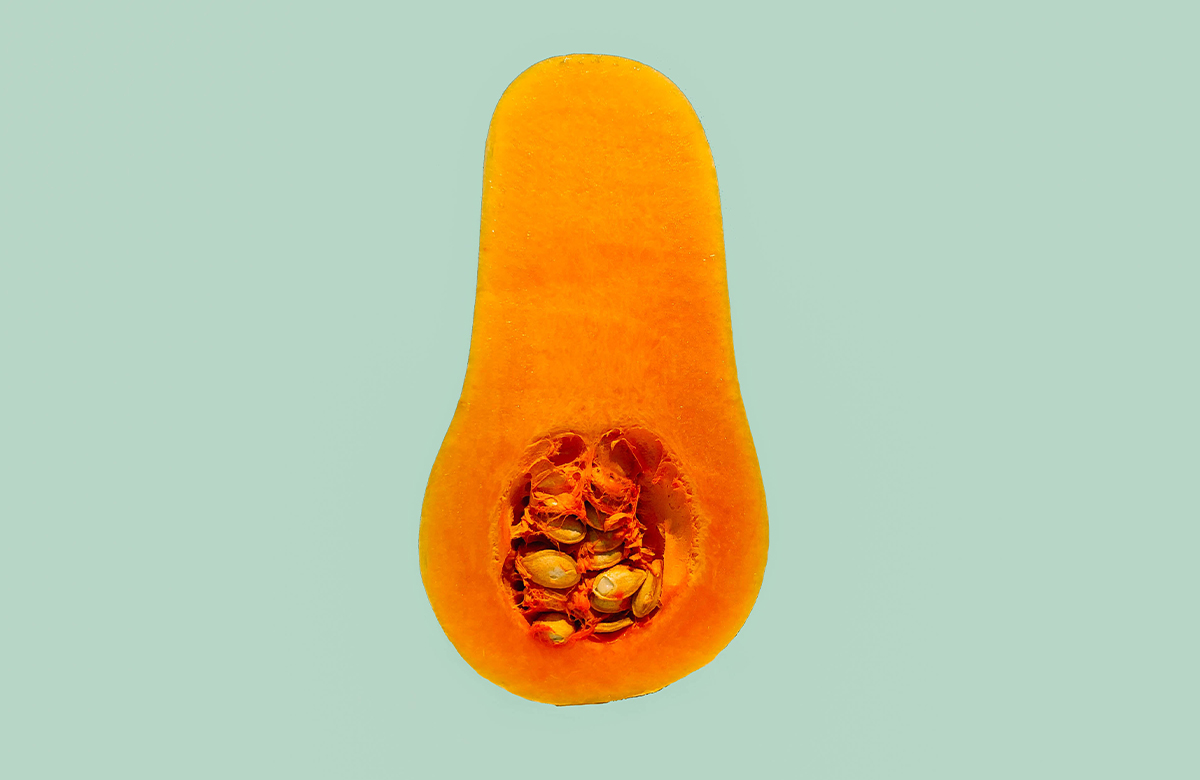
As someone who always claimed to “love vegetables”, I spent an awful lot of time in my early twenties excluding them from my shopping trolley. When I finally learned the best ways to prepare a few of my favourites, cooking became infinitely more enjoyable – and of course, rewarding!
We all want to be efficient in the kitchen and sometimes even bend the ‘rules’ a bit when we’re in a hurry (hey, the quinoa police aren’t going to burst into your kitchen because you didn’t rinse your quinoa first). But there are plenty of tricks and shortcuts you can use to make your vegetables behave the way you want them to — and even take your dinners to the next level. Here are some handy tips that can help fast-track you to culinary mastery! (or just slightly more confidence in the kitchen.)
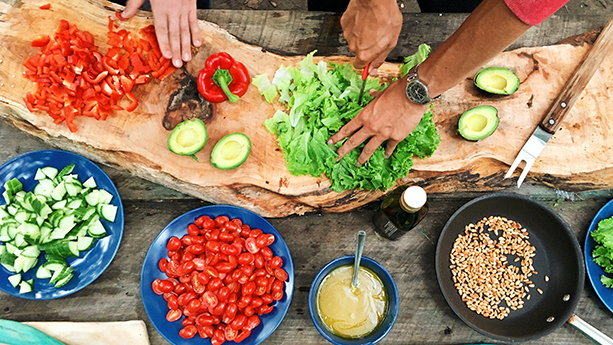
For many meals, timing is everything. And it’s easier to time everything properly when your ingredients are prepped and waiting. In fact, there is a French term for it — mise en place or “putting in place” — which refers to preparing every single ingredient before you start cooking. That includes getting every herb, spice, and sauce out of the pantry.
Ever notice how easy the meal prep looks on those cooking shows? Just look at their benchtop with all those ingredients already chopped and divvied up into little bowls — that’s their secret! (It’s definitely not that they’re highly trained professional chefs or anything.)
There is nothing more frustrating than realising your onion and garlic in the hot pan are going to be overcooked by the time you finish chopping the next ingredient you want to throw in. So, while it sounds a little tedious, just try it — make sure everything is washed, peeled, chopped, sliced, diced, massaged, sung to, whatever — before you start. Then adding each ingredient at the right time becomes effortless, and you can relax a bit while you cook!
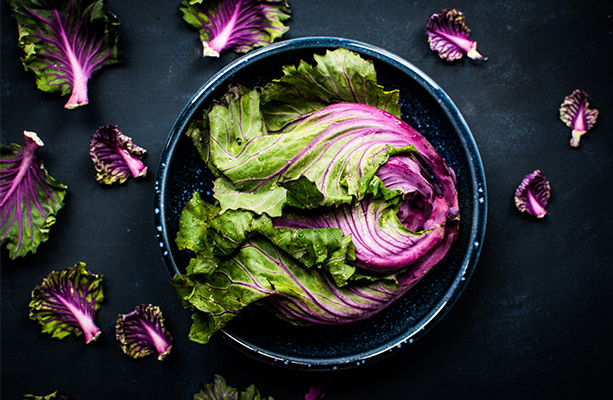
So… what is the ‘right time’ to add each veggie, anyway? Some vegetables react very quickly to heat, so they don’t need as much time to cook as others. In general, root vegetables (carrots, potatoes, parsnips, beets) take almost twice as long as cruciferous ones (cauliflower, broccoli, Brussels sprouts), while leafy greens (spinach, bok choy, Swiss chard) need almost no time at all. Firm-but-edible produce like mushrooms and capsicums fall somewhere in the middle, and cook time depends on your preferences.
Note that different parts of the same plants can have varying cooking times. The leaves of bok choy, for example, risk becoming limp very quickly while the little stems need a tad longer. That’s why it’s a good idea to separate the leaves and toss them in the pot or pan at the last moment. Whether it’s a stir-fry, curry, or soup you’re making, keeping an eye on the clock will make your recipes look — and taste — fresher.
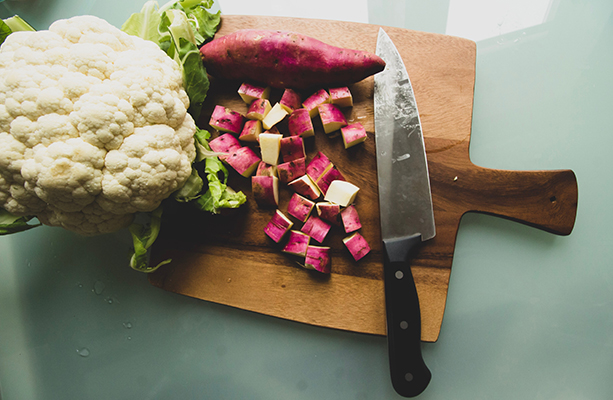
Some people peel their veggies (and fruits!) almost out of habit, not really thinking twice about whether it’s necessary. It’s worth noting: the skin on most vegetables is full of nutrients and rich in fibre — and can also add extra flavour. Before you reach for the peeler, consider this general rule of thumb: Thick or bumpy skins, such as those of winter squash, aren’t very digestible, so it’s better to remove them. Slightly thinner skins, such as those on butternut squash, parsnips, or potatoes, are totally edible but should be cooked first. Very thin skin on veggies like carrots or zucchinis can easily be eaten raw.
Hot (oven) tip! When you’re roasting larger vegetables whole (e.g. potato, squash, or eggplant), puncture their skins a few times with a fork to so they can release steam while they roast — this will prevent your dear veggies from exploding. Yes, that can happen 🙂
Have you ever wondered why the vegetables on your plate at a restaurant were cut at a long angle? Turns out it’s not just because it looks fancy.
While there is no right or wrong way to chop your ingredients (no one can tell you not to delicately cut your capsicum into little heart shapes if that is what you so desire ❤ ), cutting them at an angle actually increases their surface area. This will not only decrease your cooking time but also add more variety in texture and shape, which tends to make a meal more enjoyable! (Just bear in mind, veggies from the same group should be chopped relatively similar in size so they cook evenly.)
When in doubt, consult the experts. In this video by Epicurious, cookbook author and chef Amy Chaplin demonstrates best-practice-prep for over 50 veggies!
Sometimes it’s not immediately obvious which parts of a vegetable we should keep — especially with more obscure ones, such as artichokes. Generally, you can dispose of the hard or dried-out bit at the end/ bottom, as well as any lifeless outer leaves that have started to change colour. When it comes to stems and crisp outer leaves (e.g. from cauliflower, broccoli, or celery), hold onto those and use them to add extra flavour and texture (and nutrients) to a soup or homemade vegetable stock. Some vegetables, such as butternut squash or pumpkin, contain seeds that you’ll need to scoop out. But — before you toss them in the bin! — why not rinse and roast them for a healthy, crunchy snack?
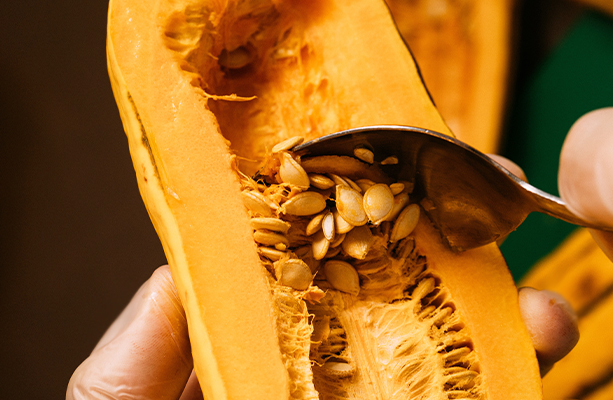
There’s an abundance of diverse, colourful vegetables out there, and almost as many ways to prepare each one! It only takes a little practice — and perhaps some experimenting — to gain more control over how your favourite recipes turn out, and (hopefully) save a bit of time in the kitchen too ![]()
What are your top tricks for dinner time that made cooking veggies easier or more fun for you? Let us know below!

Maggie’s passion for fresh, local produce began in the 90s when she first harvested the oranges in her backyard for a glass of fresh-squeezed Florida orange juice — though her Dad may remember the details of labour a little differently. Now she adds berries to her chocolate and sneaks pumpkin into brownies so she can confidently and incorrectly refer to them as health foods.